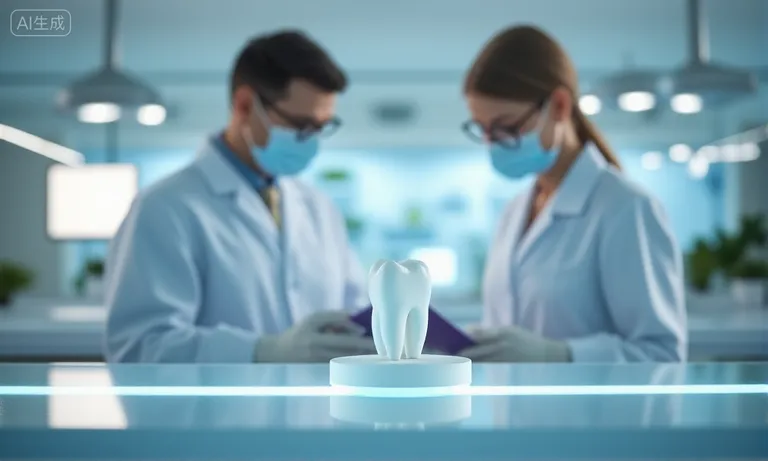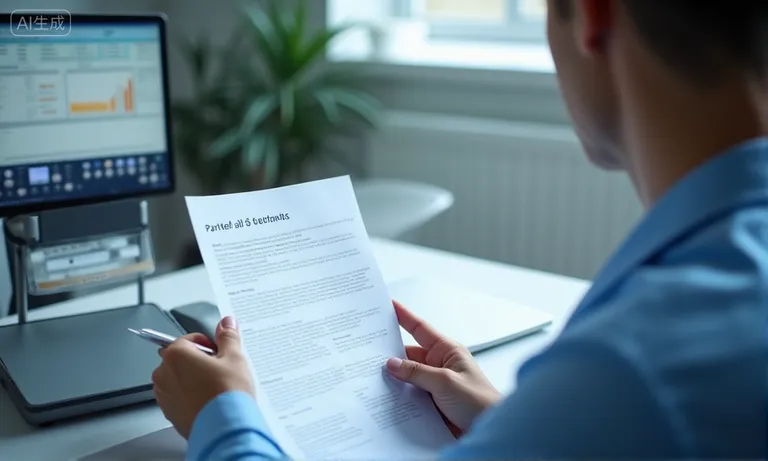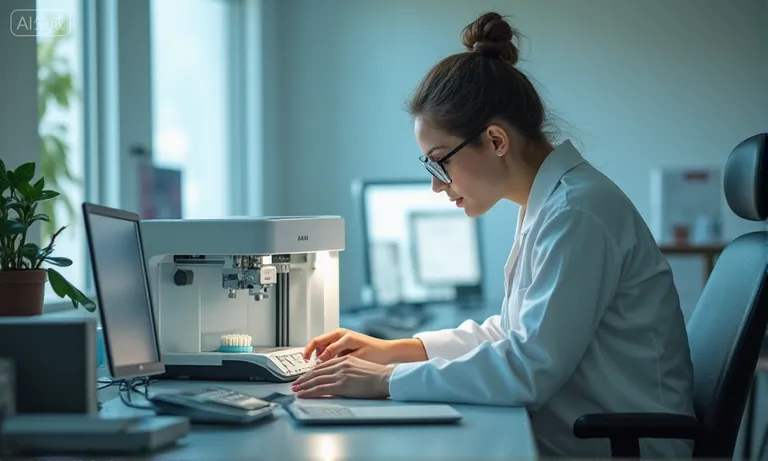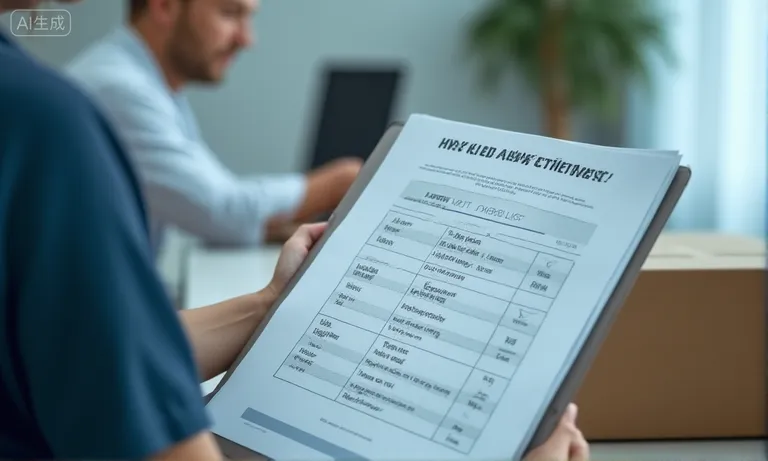Deciding whether to invest in in-house 3D printing or partner with a specialized dental lab has become a key strategic question for many dental labs. Each path offers clear advantages and trade-offs: in-house setups provide speed and full control, while external partners offer advanced capabilities without the capital burden. Understanding these differences helps labs make informed, sustainable decisions.
Key factors to weigh include:
- Costs and ROI – in-house systems require significant investment in printers, resins, and software, while partnering shifts costs to per-case outsourcing fees.
- Staffing and training – building an internal team demands specialized skills in CAD/CAM and digital workflows, while external partners reduce training requirements.
- Compliance and risk – managing ISO, FDA, or CE certifications falls on in-house labs, whereas partners share their existing certifications and reduce regulatory exposure.
- Workflow and flexibility – in-house setups enable rapid turnaround for urgent cases, while partnering provides scalability and access to advanced materials.
- Strategic considerations – labs must balance long-term control and independence against the agility and lower upfront risk of outsourcing.
Many labs find that the right choice depends on their volume, staffing, and growth plans. High-demand labs may justify the investment in internal 3D printing for crowns, dentures, or aligners, while smaller labs often benefit from outsourcing to manage costs and maintain flexibility. A hybrid model—using in-house printing for urgent work and partnering for complex or large-scale cases—can offer the best of both worlds. Evaluating these options with a clear checklist ensures each lab chooses the model that fits its business goals and long-term strategy.
How Do Costs Compare Between In-House 3D Printing and Partnering with a Dental Lab?
The financial equation between in-house 3D printing and partnering with an external lab comes down to fixed investment versus variable cost. In-house models demand significant capital expenditure on equipment, software, and materials, while partnering shifts costs to a per-print or per-case basis. Understanding both visible and hidden expenses is essential before deciding which path delivers sustainable ROI.

How Do Equipment, Resin, and Software Investments Compare to Outsourcing Fees?
In-house printing requires upfront investment in professional-grade printers ($20,000–$50,000), curing stations, and CAD/CAM software licenses. Resin costs add $200–$500 per liter depending on the application. By contrast, partner labs usually charge on a per-case basis—for example, $40–$60 for a printed surgical guide or $80–$120 for a crown—bundling equipment and material costs into the fee. For low-volume labs, outsourcing avoids capital lock-in and keeps expenses variable.
What Hidden Costs Affect Dental Labs (maintenance, upgrades, consumables)?
Hidden costs often determine profitability. In-house labs face recurring expenses such as resin tank replacement every 6–12 months, annual software upgrades, and preventive maintenance. Consumables like alcohol for cleaning and disposable build platforms also add up. One mid-sized U.S. lab reported an extra $5,000 annually in “unplanned” consumable costs. Partnering externalizes these costs, since they are absorbed by the supplier and reflected only in per-case pricing.
Which Model Offers Better ROI for Crowns, Dentures, and Surgical Guides?
The return on investment varies by case mix:
- Crowns and dentures – outsourcing can be cost-effective at low to medium volumes, as cases are priced per unit.
- Surgical guides – often produced in higher volume, making in-house printing more attractive when case load exceeds 50 guides per month.
- Full dentures – the material validation requirements often make outsourcing more predictable, as partner labs manage certification and compliance.
Labs with consistent, high-volume needs may achieve ROI on equipment in 2–3 years, but smaller labs usually find that outsourcing ensures cost stability and avoids downtime.
In cost comparison, there is no universal winner. Labs should model case volume, mix, and hidden costs before committing. Many dental labs choose a blended strategy: outsourcing complex or regulated cases while keeping simple, high-volume prints in-house. As an overseas dental lab, Raytops Dental Lab often collaborates with clinics that underestimated resin consumption in-house, providing a buffer of reliable per-case pricing while they stabilize their digital investments.
What Training and Staffing Challenges Do Dental Labs Face with In-House Printing vs Partnering?
The biggest challenge in adopting 3D printing is not the hardware—it’s the people. In-house printing requires technicians to develop new digital skills, follow updated SOPs, and manage a steep learning curve. Partnering, by contrast, reduces the burden by externalizing many of these responsibilities to an experienced lab.
What Skills Are Needed to Manage CAD/CAM and STL Workflows for Restorations?
In-house adoption demands a blend of dental and technical knowledge. Essential skills include:
- CAD software proficiency (3Shape, Exocad).
- STL file inspection and error correction.
- Printer calibration and resin handling.
- Post-processing control (washing, curing, and polishing).
- Workflow documentation and traceability logging.
Without this skill set, print errors and fit problems multiply.
How Does Partnering Reduce the Burden of Technician Training and SOP Updates?
Outsourcing shifts much of the complexity to the partner lab. Instead of hiring or retraining staff, clinics and small labs can rely on external teams already trained in CAD/CAM workflows and material validation. For example, a Canadian lab partnered with an overseas dental lab for splint production. Their internal staff only needed to scan and send STL files, while the partner managed resin selection, curing, and QC. This reduced their internal training requirements by nearly 60% while maintaining case acceptance.
Which Option Carries Higher Risk of Errors or Remakes in Dental Prosthetics?
Error rates often reflect the maturity of the team:
- In-house – higher risk of remakes during the first 6–12 months, especially with margin fit and occlusion errors.
- Partnering – lower error risk, since production follows established SOPs, but dependency on external schedules may cause communication delays.
Labs need to weigh whether they prefer to control production with higher initial training costs, or reduce training needs by leveraging an external partner’s expertise.
In staffing, the trade-off is clear: in-house printing builds long-term capability but demands heavy upfront investment in people and training. Partnering provides immediate access to expertise and lowers error risk. As a global dental lab, Raytops Dental Lab has worked with many clinics that first outsourced complex restorations, using this period as a “training bridge” before gradually moving simpler cases in-house.
How Do Compliance and Certification Responsibilities Differ Between In-House Printing and Partner Labs?
Compliance is one of the most underestimated risks in dental 3D printing. In-house labs must take full responsibility for regulatory approvals, material validation, and traceability, while partner labs often manage certifications and documentation as part of their service. This division of responsibility shapes how easily restorations can be accepted by clinics and regulators.

What Regulatory Standards Must In-House Labs Manage (ISO, FDA, CE)?
Labs printing in-house must comply with multiple frameworks:
- ISO 13485 – quality management system for medical device production.
- FDA 510(k) – required in the U.S. for biocompatible resins and intraoral devices.
- CE Marking & MDR – mandatory for distributing restorations within the EU.
- Regional regulations – many countries require additional approvals for permanent prosthetics.
Each framework demands documentation, audits, and continuous updates.
How Do Partner Labs Share Certifications for Printed Crowns, Dentures, and Aligners?
Partnering shifts the compliance burden. Certified dental labs maintain valid ISO, FDA, or CE approvals and provide documentation with each shipment. This allows smaller clinics or regional labs to deliver devices without undergoing full certification themselves. For instance, a European clinic outsourcing aligners to a partner lab was able to expand services without building its own MDR-compliant process, relying instead on the partner’s certified workflow.
What Risks Exist in Material Validation and Traceability for Dental Applications?
Material validation is often the weakest link. Below is a summary of responsibilities:
| Requirement | In-House Lab | Partner Lab |
|---|---|---|
| Resin certification | Lab must validate each batch | Provided with every shipment |
| Lot traceability | Lab must log and audit internally | Documentation delivered by partner |
| Compliance updates | Lab tracks regulatory changes | Partner updates certifications centrally |
Labs printing in-house must implement full traceability systems, while outsourcing includes these checks as part of the service package.
Compliance is not just paperwork—it determines whether restorations are legally accepted. Labs that underestimate certification often face rejected cases or rework. By working with an overseas dental lab like Raytops Dental Lab, clinics and small labs can reduce compliance risks, since certifications and traceability are integrated into every delivery.
Which Is More Efficient: In-House 3D Printing or Partnering with a Dental Lab?
Efficiency in dental 3D printing depends on both turnaround speed and workflow flexibility. In-house printing offers immediate control of urgent cases but introduces extra steps in file preparation and post-processing. Partnering provides scalable capacity and consistent output, often reducing overall errors and remakes.
How Does In-House Printing Impact Turnaround Time for Models and Surgical Guides?
Labs with in-house printing can handle same-day models or surgical guides, especially for urgent cases. However, total production time includes not only print duration but also file verification, support removal, cleaning, curing, and quality inspection. This means “print time” is only a fraction of the full workflow. A crown model may print in 3 hours but still require an additional 2–3 hours before delivery.
How Can Partnering Provide Scalable Capacity for Crowns, Bridges, and Aligners?
Partner labs specialize in managing larger case loads without compromising quality. Advantages include:
- Ability to process high-volume crown and bridge orders simultaneously.
- Dedicated staff for aligner production, reducing bottlenecks.
- Established SOPs that streamline design-to-delivery turnaround.
- Reliable logistics support with fixed shipping schedules.
This scalability helps small and mid-sized labs avoid delays during peak demand periods.
Which Option Better Handles File Compatibility and Post-Processing in Dental Workflows?
File preparation and post-processing are often the hidden bottlenecks.
- File conversion – ensuring STL files transfer correctly between CAD and printer software.
- Print setup – orienting models to minimize support structures.
- Post-processing – cleaning and curing under standardized conditions.
- Final inspection – checking for margin definition and occlusal accuracy.
In-house teams must master each step, while partner labs embed these processes into daily production, ensuring consistent results.
Efficiency is not measured only by speed—it also includes the ability to scale without sacrificing quality. In-house printing offers control and immediacy, but partner labs bring reliability and volume flexibility. Many clinics balance the two, handling simple same-day cases internally while leveraging partners like Raytops Dental Lab for complex or high-volume work.
What Strategic Risks Come with In-House 3D Printing vs Relying on a Partner Lab?
Every investment path in 3D printing carries long-term risks. In-house printing risks rapid technology obsolescence and heavy reinvestment, while relying on a partner lab creates dependency that can limit flexibility. Balancing these risks requires clear alignment with the lab’s long-term digital strategy.

How Does Technology Obsolescence Affect In-House 3D Printing Investments?
Printer technology evolves quickly, with resin chemistries, hardware resolution, and software platforms changing every 2–3 years. Labs investing heavily in equipment risk being tied to outdated systems before full ROI is achieved. For example, a lab that invested in early-generation SLA printers in 2018 faced replacement costs within four years when resin compatibility updates were discontinued. This risk makes long-term equipment planning a moving target.
What Dependency Risks Exist When Relying on a Partner Lab for Complex Prosthetics?
Relying on external partners brings different vulnerabilities, including:
- Supply chain dependence – shipping delays or customs hold-ups affect delivery.
- Pricing shifts – long-term costs may increase if partner fees rise.
- Vendor lock-in – switching providers can be difficult once workflows are established.
- IP/data security – STL files stored externally create confidentiality risks.
Partnering reduces capital risk but shifts control outside the lab’s walls.
How Can Labs Balance Short-Term Savings with Long-Term Digital Strategy?
The most resilient labs evaluate investment against their digital roadmap. Short-term savings from outsourcing may be outweighed by long-term goals to build in-house digital expertise. Conversely, buying hardware prematurely can divert funds from training or compliance. One European DSO balanced this trade-off by outsourcing aligners for three years while gradually training staff for in-house crown and bridge production.
Strategic risk management is about alignment rather than avoidance. In-house printing secures autonomy but demands constant reinvestment, while partnering lowers direct risk but creates reliance. Many labs find that blending both models with overseas partners such as Raytops Dental Lab offers stability: building digital skills internally while securing external capacity for complex, regulated, or high-volume work.
When Should Dental Labs Use a Hybrid Approach to 3D Printing?
A hybrid approach—combining limited in-house 3D printing with external partnerships—often gives labs the best balance of speed, flexibility, and cost control. It allows labs to handle urgent cases internally while outsourcing complex or high-volume work to partner labs.

How Can In-House Desktop Printers Support Urgent or Same-Day Cases?
Desktop 3D printers are ideal for producing same-day models, temporary crowns, or surgical guides. A single printer can complete small jobs in a few hours, giving dentists fast turnaround for patients with urgent needs. This reduces patient wait times and demonstrates clinic responsiveness. However, consistent use for complex restorations often stretches the limits of desktop machines, leading to quality variations and higher remake rates.
When Should Complex or High-Volume Work Be Outsourced to Partner Labs?
Partner labs excel in scenarios where:
- Case volume exceeds in-house printer capacity.
- Materials require certification and validated workflows.
- Advanced restorations (full dentures, multilayer bridges) need high accuracy.
- Logistics support is required for large-scale aligner production.
Outsourcing keeps internal teams focused on high-value, urgent cases while ensuring consistency in demanding prosthetics.
What Are the Benefits of Combining Both Models for Flexibility and Cost Control?
The hybrid approach creates resilience by blending strengths of each path:
| Benefit | In-House Printing | Partner Lab | Hybrid Advantage |
|---|---|---|---|
| Turnaround | Immediate for urgent cases | Predictable for routine cases | Faster same-day + stable long-term supply |
| Cost structure | Fixed investment | Variable per-case | Balanced CAPEX + OPEX |
| Compliance | Lab-managed | Partner-certified | Shared responsibility |
| Scalability | Limited by printer capacity | High-volume capable | Scalable without overinvestment |
This model helps labs manage both short-term clinical demands and long-term digital growth.
Hybrid adoption is increasingly common among forward-looking dental labs. By keeping urgent cases in-house while collaborating with overseas partners such as Raytops Dental Lab for regulated or large-volume work, labs can reduce risk, improve efficiency, and keep overall costs under control.
How Can Dental Labs Make the Right Decision Between In-House Printing and Partnering?
The right choice between in-house 3D printing and partnering depends on a lab’s case mix, budget, and long-term digital roadmap. A structured evaluation process helps decision makers weigh both models objectively before committing resources.

What Evaluation Checklist Helps Labs Compare Both Options?
Decision makers can use the following checklist to guide evaluation:
- Case volume: Are daily/weekly cases consistent enough to justify fixed equipment costs?
- Case type: Are restorations simple (models, guides) or complex (full dentures, multilayer bridges)?
- Budget allocation: Is capital available for hardware, or is variable OPEX more sustainable?
- Compliance: Does the lab have resources to manage certification internally?
- Staff readiness: Do technicians have digital expertise, or is outsourcing more efficient?
How Can Pilot Projects on Crowns or Dentures Support Low-Risk Decisions?
Pilot projects provide valuable data before major investment. A mid-sized clinic in Australia ran a six-month pilot: simple crown models were printed in-house on a desktop system, while full dentures were outsourced to a partner lab. Tracking turnaround time, remake rates, and costs helped them build a realistic business case. By the end of the pilot, they had clear insight into which cases fit their internal capacity and which should remain external.
What Factors Indicate When It’s Better to Outsource vs Build In-House Capacity?
Clear indicators often emerge:
- Outsource when case demand is irregular, compliance requirements are strict, or volume spikes create bottlenecks.
- In-house when daily cases are predictable, staff are trained in CAD/CAM, and ROI can be achieved within 2–3 years.
- Hybrid when urgent cases must be managed quickly, but large or complex cases require external expertise.
A structured decision process reduces guesswork and aligns investment with long-term goals. Many labs find that starting with pilots and outsourcing complex cases, while gradually building selective in-house capacity, delivers the best balance. Partnering with overseas labs such as Raytops Dental Lab provides an added layer of flexibility, supporting labs as they refine their strategy without overextending resources.
Conclusion
Choosing between in-house 3D printing and partnering with a dental lab is ultimately a strategic decision, not just a financial one. In-house investments provide autonomy and speed for urgent cases but carry risks of obsolescence, training demands, and compliance complexity. Partnering shifts costs to a per-case model, offering scalability and regulatory assurance but introducing dependency. Many labs find a hybrid path most resilient—balancing immediacy with long-term flexibility. Collaborating with an overseas partner like Raytops Dental Lab helps bridge this transition, enabling labs to manage costs, maintain quality, and scale digital workflows without overextending resources.


